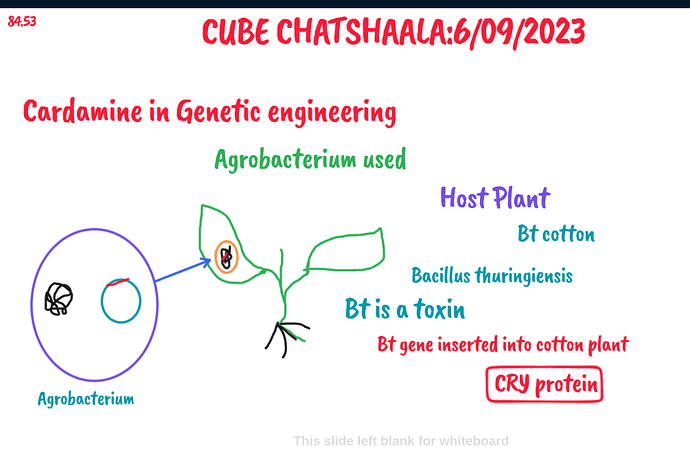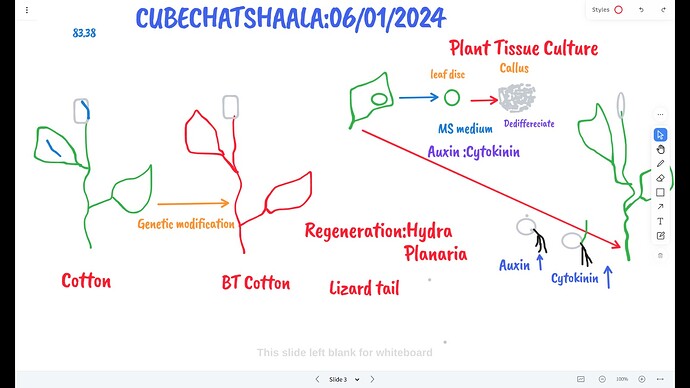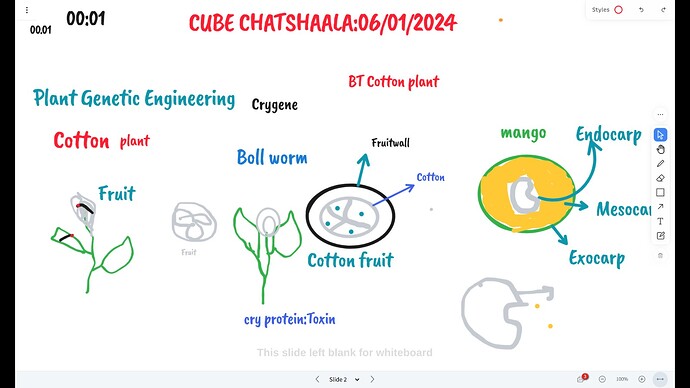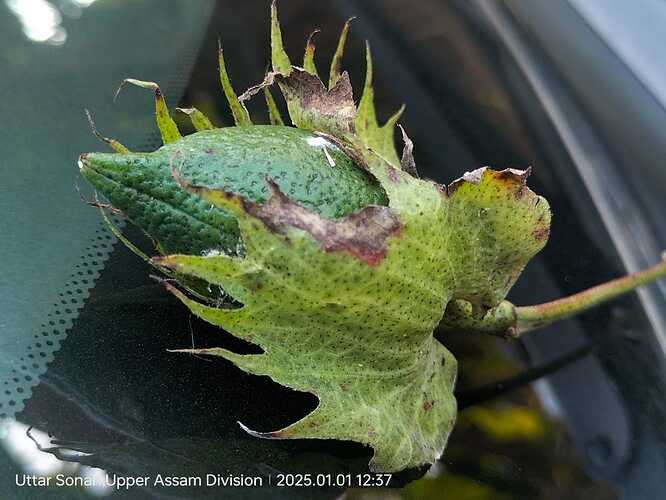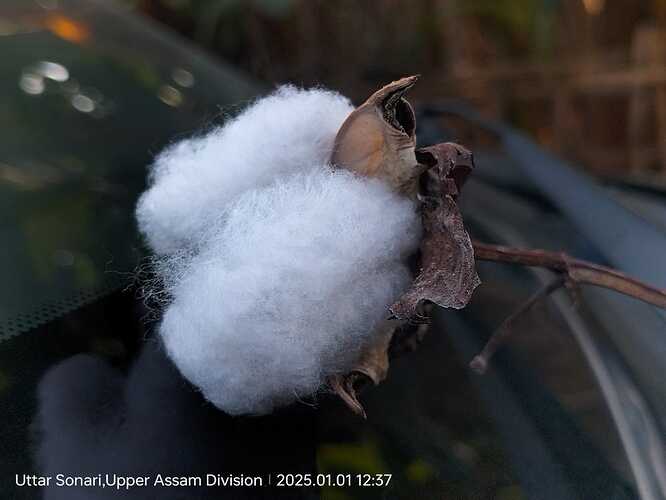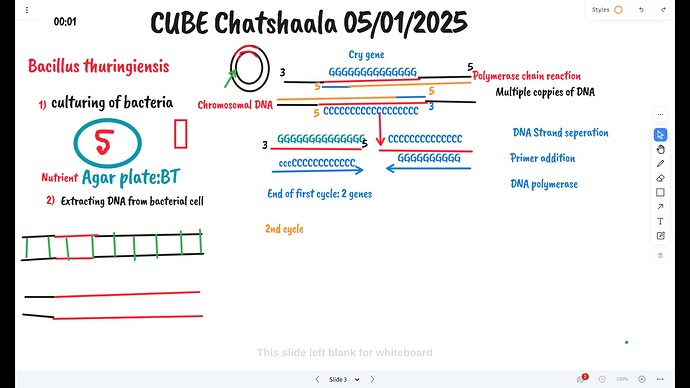Today we discussed about how Agrobacterium is a bacteria which can infect the plant and insert its DNA into it. Normally, Agrobacterium infects the plant and causes the formation of tumour. @Shalini described that there has to be a gene causing tumor which can be removed and our gene of interest can be inserted in that place to transfer it to the plant.
@Chitralekha asked how does the tumour is formed in plant? @Shalini explained, there are virulent genes which can lead to expression of some chemicals which cause tumour.
@Chitralekha asked what is the role of plasmid in this transformation? and explained that there is a transfer DNA (tDNA) region where any gene can be inserted.
The gene on expression along with virulent genes is expressed, resulting in formation of Opine. This opine is used by bacteria to survive.
@Chitralekha also explained that we can also remove the virulent genes so that even opine formation is stopped as its not needed for us and desired gene can be inserted in that place.
After the transformation of cells they are grown as callus on plant tissue culture medium so that all the cells can have desired genes.
In case of floral dip method, the gene can be transformed in the floral buds which has gametic cells, the next generation plants will be a transformed plant.
@magpie explained the similarity between tissue culture and floral dip method and argued which one is better method in terms of frequency of gene transfer.
In tissue culture the benefit is if any cell gets transformed it can form callus and plant can get transformed.
@magpie also asked if we can grow seeds of cardamine after gene transfer and grow in tissue culture like MS medium?
@Chitralekha said why do we need MS medium, as seed has all the nutrients so it can be grown with normal water.
Lets discuss more on which is best method for genetic engineering.
